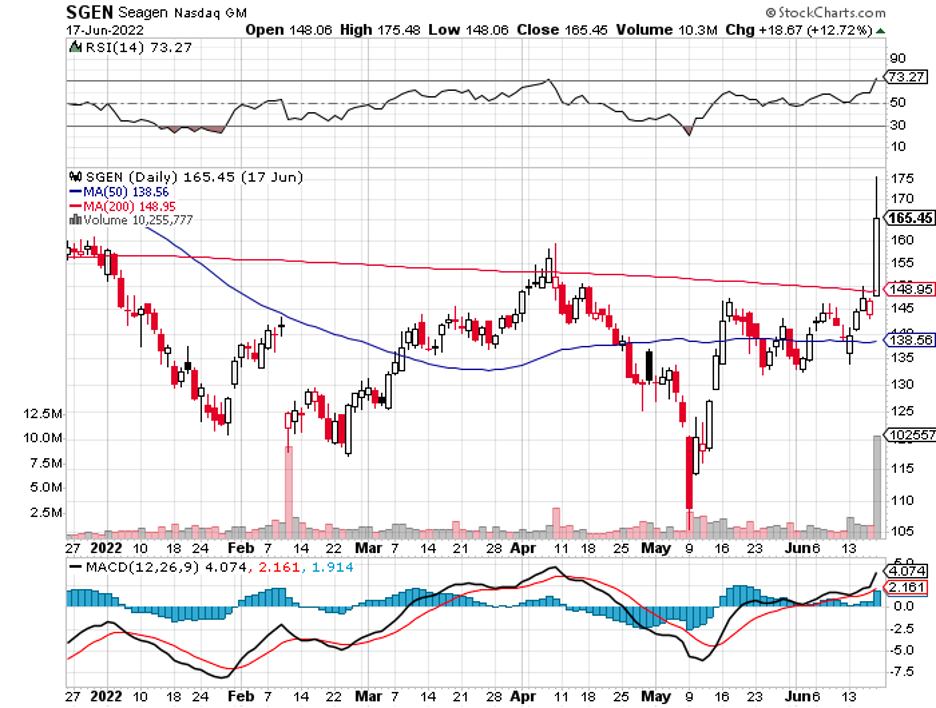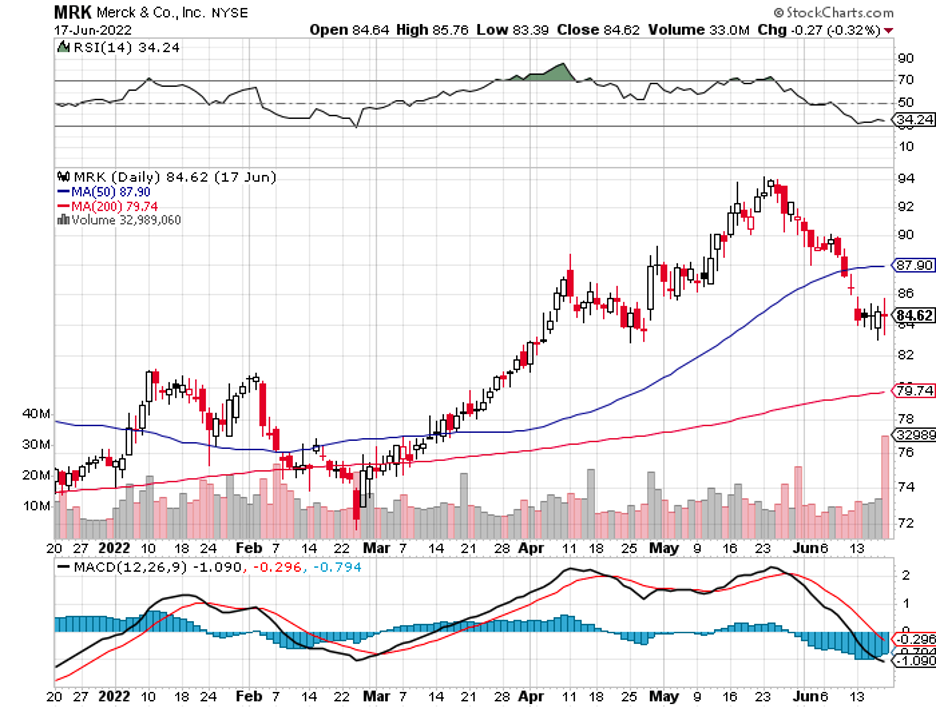So far, there’s no clear leader in the cancer market. However, it looks like things might change soon if Merck (MRK) gets its way.
The biotechnology and healthcare sector has heard some interesting updates lately involving Merck and its frequent collaborator, Seagen (SEGN).
While Merck already has a stake in Seagen, it appears that the New Jersey biopharma wants the whole thing. There’s no need to panic buy just yet, though, since Merck still has to go through hoops to prove that its plan won’t cause any antitrust issues.
Moreover, Merck won’t be the only suitor. Several names in Big Pharma have been eyeing Seagen for quite some time, including Pfizer (PFE) and AbbVie (ABBV).
Even Japan’s Astellas Pharma, with a jaw-dropping $3.76 trillion market capitalization, is said to be interested.
If this does push through, it would be another massive deal since Seagen’s current market capitalization is at $31 billion.
Why is Seagen an attractive acquisition candidate?
This biotech currently has four cancer treatments available on the market.
It’s also reviewing a couple of candidates to determine how they react as part of a combo therapy with Merck’s blockbuster drug Keytruda.
Evidently, the potential to exclusively own the rights to compounds that could bolster the effects and expand the indications of its bestselling therapy is a significant motivation for Merck.
If the acquisition happens, Merck will undoubtedly be an incredibly formidable powerhouse in the oncology sector.
At the moment, the company already has 46 commercially approved indications in its cancer portfolio.
By 2028, Merck plans to see this number grow to over 80 oncology drugs, with Keytruda leading the charge.
Aside from its potential combination with Merck’s top-selling treatment, what’s more promising for Seagen is its actual portfolio of four molecules or its Big Four franchises.
These are Adcetris, Tukysa, Padcev, and Tivdak.
Adcetris has been hailed as the foundation of care for practically all types of lymphoma, while Padcev has been proven to be the standard of care for advanced bladder cancer.
Tukysa has been hailed as best-in-class for metastatic breast cancer, while Tivdak is the first-in-class for cervical cancer.
Holding such premier titles and indications ensures that these treatments generate highly aggressive revenue boosts, thereby guaranteeing their trajectory towards becoming blockbusters.
After all, you rarely hear of any blockbuster treatment being a second-line therapy.
In terms of sales, the Big Four managed to generate a total of $383 million in the first quarter of 2022. This indicates approximately 27% year-over-year sales growth, which bodes well for the future of Seagen’s portfolio.
Adcetris rakes in $181 million during the said period, Padcev contributed $100 million, Tukysa generated $90 million, and Tivdak recorded $11 million.
Tukysa’s growth was attributed to its penetration of the European market in February 2021, while Adcetris soared because of its expansion to include advanced Hodgkin lymphoma.
As for Tivdak, this particular product’s performance could be attributed to the fact that it was only approved last September 2021.
Among the four, however, Padcev showed the most aggressive rise in sales at a 44% increase year over year.
Its substantial growth is not only due to its superior efficacy over traditional treatments but also to its ever-increasing market penetration.
Aside from the US, it has successfully entered the UK, Japan, Canada, Israel, Switzerland, and the European Union.
Given its history and how it’s performing, Padcev is projected to become a blockbuster treatment before 2030.
Although the Big Four have delivered groundbreaking changes to the oncology sector, Seagen has been consistent in aggressively pursuing new candidates.
It currently has 17 programs in its pipeline, which target blood cancers and solid tumors.
Ultimately, Seagen’s goal is to become an all-around cancer biotech—aka the oncology sector's Johnson & Johnson (JNJ).


